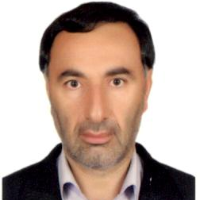Analyzing spatial-social patterns of rural housing in Qom province and social factors affecting it Print
Author(s):
Abstract:
Introduction
Rural settlements can be studied based on the ir shape and type, the natural factors such as climate, soil and water, social and cultural factors influencing the texture and morphology and the spatial -social patterns originating from them and even based on the degree of their development. Therefore, in order to plan for sustainable development of rural settlements and for realization of national development goals, it is important to identify and analyze the spatial -social patterns of residence at the context of human settlement. Disorder in the function of spatial system of rural settlements in Qom province along with polarization of the population, activities and services in the metropolitan city of Qom and also lack of adequate attention to the various aspects of rural life can lead to challenges in the development plans of the province. Due to the above requirements, this research intends to study, understand and analyze the spatial and social patterns of rural houses in Qom province. So that in addition to finding natural factors affecting the rural human settlements, developments and changes in the economic and social structure (in this study changing rural areas to cities and economic centers and service deployment and etc.) of rural human settlements in terms of the ways cities are kept, population stabilization and function and morphology of rural houses should be investigated. Methodology
The research method is descriptive and analytical and data collection method is field study and documentary. In conducting the study, first existing data on the topic and the region were gathered from the information contained in the books, documents, journals and basic maps and then the required information about the province were prepared through field studies including observations, interviews and referring to the region. Consequently, using computers and GIS software, analysis and combining data layers took place. It should be noted that in this study the information obtained to draw maps were related to the data layers of the last census conducted in 2006. In the first stage, they were analyzed in the Excel software and then they were analyzed in the GIS software. Discussion
Findings show that spatial -social patterns of rural housing are due to natural factors (altitude, soil and water resources, springs, canals and wells) as well as human factors (roads, service centers, the way rural community is influenced by the urban community and changes in the social and economic construction) and in some cases, the effect is a combination of several factors. The distribution pattern is largely cluster and linear cluster. In addition, considering the geographical features of Qom province, a kind of spatial relation and settlement hierarchy governs there, in which dichotomy in terms of space (the urban population in the metropolitan city of Qom) and peripheral (rural areas and the rural – urban areas) is clearly evident. So that an imbalance in the spatial structure and population polarization and gradual depletion of rural houses are the challenges and factors of instability and increasing undermining of the rural areas despite the regional power and capabilities. In addition, the findings of this study with regard to social and economic factors such as the social foundations of human geography and proximity to the major city of Qom, creating small cities, existence of animal and agriculture pole, trade and economic areas, linking roads, construction of towns and industrial areas in the establishment and maintenance of activity and sustainability of settlements have different effects in terms of positioning mode and rural human settlements in spatial, social and economic dimensions. However, in this respect, small cities do not have significant effects on retention and recruitment of rural population in comparison to the metropolitan of Qom. Conclusion
Spatial -social patterns of rural housing of Qom province are due to natural factors as well as human factors and in some cases, a combination of all these factors. The distribution pattern is largely cluster and linear cluster. Small cities of the province, as artificial agents in attracting the population in rural settlements, do not have significant effects on retention and recruitment of rural population especially in comparison to the metropolitan of Qom. However, influenced by the impact of changes in social - economic structures, rural houses through the relationship between the urban and rural areas and providing economic and social services have undergone changes in the tissue anatomy and morphology of rural houses (as a symbol of how human interact and relate with the surrounding natural environment) and in some way represents the kind of economic activity and social - cultural attitudes of villagers and the development way and use of technology, and ultimately represents the level of income and livelihood of the residents. In other words, there is a mutual relationship between spatial patterns and social patterns originating from the spatial dimensions of rural houses.Keywords:
Language:
Persian
Published:
Geography and Environmental Planning, Volume:23 Issue: 4, 2013
Pages:
57 to 78
magiran.com/p1126966
دانلود و مطالعه متن این مقاله با یکی از روشهای زیر امکان پذیر است:
اشتراک شخصی
با عضویت و پرداخت آنلاین حق اشتراک یکساله به مبلغ 1,390,000ريال میتوانید 70 عنوان مطلب دانلود کنید!
اشتراک سازمانی
به کتابخانه دانشگاه یا محل کار خود پیشنهاد کنید تا اشتراک سازمانی این پایگاه را برای دسترسی نامحدود همه کاربران به متن مطالب تهیه نمایند!
توجه!
- حق عضویت دریافتی صرف حمایت از نشریات عضو و نگهداری، تکمیل و توسعه مگیران میشود.
- پرداخت حق اشتراک و دانلود مقالات اجازه بازنشر آن در سایر رسانههای چاپی و دیجیتال را به کاربر نمیدهد.
In order to view content subscription is required
Personal subscription
Subscribe magiran.com for 70 € euros via PayPal and download 70 articles during a year.
Organization subscription
Please contact us to subscribe your university or library for unlimited access!



